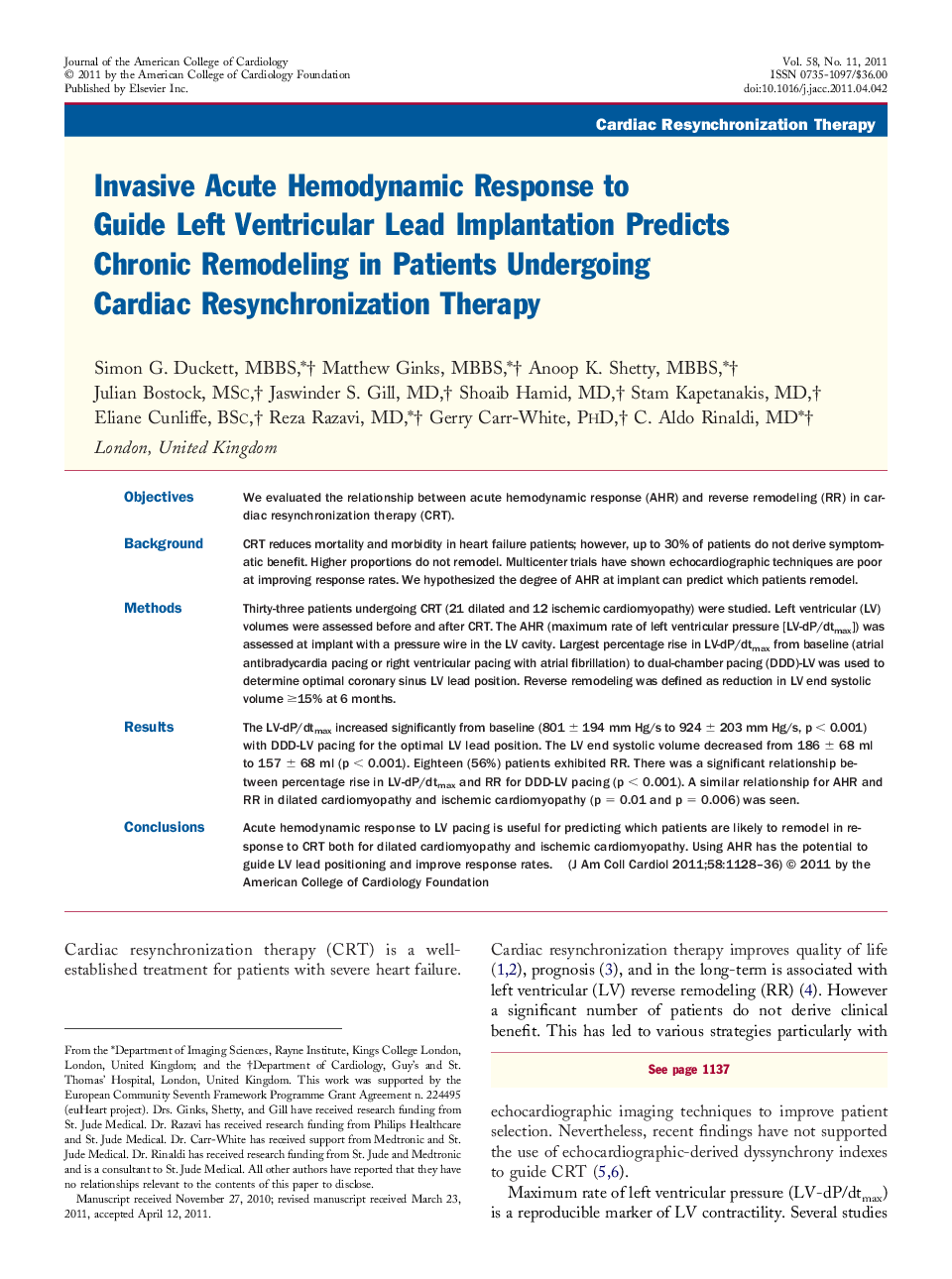| Article ID | Journal | Published Year | Pages | File Type |
|---|---|---|---|---|
| 2948663 | Journal of the American College of Cardiology | 2011 | 9 Pages |
ObjectivesWe evaluated the relationship between acute hemodynamic response (AHR) and reverse remodeling (RR) in cardiac resynchronization therapy (CRT).BackgroundCRT reduces mortality and morbidity in heart failure patients; however, up to 30% of patients do not derive symptomatic benefit. Higher proportions do not remodel. Multicenter trials have shown echocardiographic techniques are poor at improving response rates. We hypothesized the degree of AHR at implant can predict which patients remodel.MethodsThirty-three patients undergoing CRT (21 dilated and 12 ischemic cardiomyopathy) were studied. Left ventricular (LV) volumes were assessed before and after CRT. The AHR (maximum rate of left ventricular pressure [LV-dP/dtmax]) was assessed at implant with a pressure wire in the LV cavity. Largest percentage rise in LV-dP/dtmax from baseline (atrial antibradycardia pacing or right ventricular pacing with atrial fibrillation) to dual-chamber pacing (DDD)-LV was used to determine optimal coronary sinus LV lead position. Reverse remodeling was defined as reduction in LV end systolic volume ≥15% at 6 months.ResultsThe LV-dP/dtmax increased significantly from baseline (801 ± 194 mm Hg/s to 924 ± 203 mm Hg/s, p < 0.001) with DDD-LV pacing for the optimal LV lead position. The LV end systolic volume decreased from 186 ± 68 ml to 157 ± 68 ml (p < 0.001). Eighteen (56%) patients exhibited RR. There was a significant relationship between percentage rise in LV-dP/dtmax and RR for DDD-LV pacing (p < 0.001). A similar relationship for AHR and RR in dilated cardiomyopathy and ischemic cardiomyopathy (p = 0.01 and p = 0.006) was seen.ConclusionsAcute hemodynamic response to LV pacing is useful for predicting which patients are likely to remodel in response to CRT both for dilated cardiomyopathy and ischemic cardiomyopathy. Using AHR has the potential to guide LV lead positioning and improve response rates.
